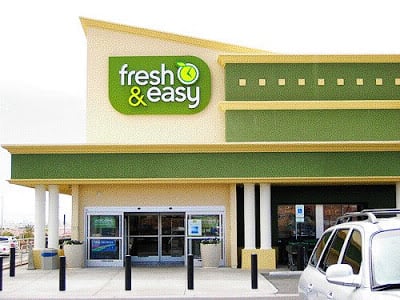Bond
Is the Urban Market Format Working for Big Boy Retail?
Last month a Sobeys Urban Fresh location on busy Bloor St in Toronto closed its doors. Sobeys reported that they are closing 15 of their smaller format locations in addition to 35 other larger stores across the country.
 After walking by the Sobeys store and taking this picture it got me thinking….how are other big boy grocers and Walmart small urban format stores performing?
After walking by the Sobeys store and taking this picture it got me thinking….how are other big boy grocers and Walmart small urban format stores performing?
There was so much hype in the past five years about these big retailers moving into urban neighbourhoods to gain share and compete with other grocers and independents. Are they succeeding and are they even welcome? This past year near the closed Sobeys there were community protests and petitions against the construction of an urban Loblaw market and a likely failed attempt to open a downtown Walmart location.

Let's look at another small format adventure - Tesco Fresh & Easy
The failed Tesco Fresh & Easy, which had 200 stores across California, Nevada and Arizona lost money since opening in 2007. Tesco is one of the world's largest supermarket brands and they totally missed the mark in the US with a 10,000 sq ft fresh offering format that was somewhere between convenience and a supermarket. Tesco described it as a store that offered the “convenience of Walgreens, the value of Walmart, the fresh food quality of Whole Foods, and the differentiated product range of a Trader Joe’s”.
A few reasons why they failed:
- 2008 economic downturn
- No loyalty program, Tesco did not introduce their well know UK Clubcard points
program until 2011, too late. - Value proposition confusion with too much of a focus on price. Shoppers could not understand if it was a discount retailer, fresh market or convenience store.
- Proximity to more competitively priced supermarkets in areas where most people drive.
- Product - no bakery, too much prepared, little frozen in the first phase and a heavy focus on private label products in a market where American's are loyal to brand names.
- Supply chain and operational issues with many out of stocks, self check out problems and store cleanliness issues - all critical to a retailer’s success.
With a $1.8 billion loss Tesco pulled out and sold Fresh & Easy in 2013.

Walmart Express and Neighbourhood Market
This week Supermarket News reported that Walmart’s Neighbourhood Market format may not be as big a threat to drug, dollar and grocers like Kroger. BMO Capital reported that Walmart has lost market share in four of the top 10 markets where Neighbourhood Market stores are located. The article and BMO point out that in some cases Market stores may be cannibalizing sales from larger Supercenters in the same market. Walmart has plans for over 500 locations as opportunities for supercenter locations dry up in North America. Does the small format mean more trips to these stores, more share and in the long term a strong revenue channel for Walmart? From a 2013 Retailwire article here’s how Walmart US president and CEO Bill Simon described their smaller format stores.
"Against a dollar store, they have fresh food, pharmacy and gas and perform really, really well and have a pricing advantage. Against drug they have a significant pricing advantage and they have fresh food and gasoline. And then against small grocery stores we have a competitive price advantage."
Keep watching
It’s an interesting format and retail category to keep our eyes on. Will small, community based and independent retail continue to thrive or will convenience and price rule and allow giants like Walmart to change the face of neighbourhood retail and high streets forever? I think both can live together and that many local and independent retailers will continue to grow and succeed as long as the store experience, product, assortment and service is top notch and different enough.
What do you think?
Please share your thoughts and predictions as we watch not only mass and grocery channels but drug, gas and even dollar stores make moves and innovate to gain share in neighborhood locations. Let's not forget the threat of online and local delivery…oh boy!